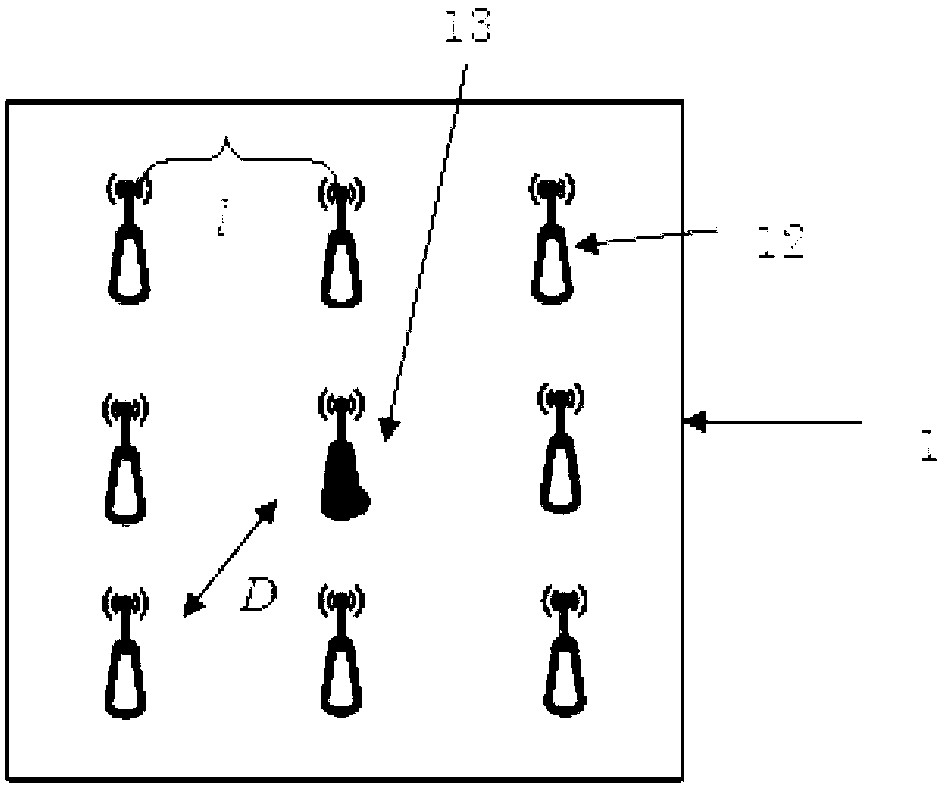Method for node placement of Internet of Things
A node deployment and Internet of Things technology, applied in the field of Internet of Things, can solve the problems of network performance impact, failure to consider the placement of cluster head nodes, etc., and achieve the effects of uniform distribution, convenient management, and accurate data fusion
- Summary
- Abstract
- Description
- Claims
- Application Information
AI Technical Summary
Problems solved by technology
Method used
Image
Examples
Embodiment Construction
[0029] The present invention is described in detail below in conjunction with accompanying drawing and embodiment:
[0030] The present invention proposes a large-scale monitoring-oriented IoT node deployment method, comprising the following steps:
[0031] 1. As shown in Figure 1(a), according to the requirement of uniform sampling of monitoring data and energy-saving data transmission as much as possible, on the premise that the actual transmission radius of the selected sensor is known, a set of 9 equal distances from front to back and left to right is established. The basic monitoring area model 1 is composed of clusters of monitoring points in a square.
[0032] The sensor nodes of the square basic monitoring area model 1 of the present invention adopt a cluster head structure, including nine sensor nodes, and the nine sensor nodes are arranged in a 3×3 array, and the distance between two adjacent sensor nodes in each row / column is equal, Among them, the central node of ...
PUM
 Login to View More
Login to View More Abstract
Description
Claims
Application Information
 Login to View More
Login to View More - R&D
- Intellectual Property
- Life Sciences
- Materials
- Tech Scout
- Unparalleled Data Quality
- Higher Quality Content
- 60% Fewer Hallucinations
Browse by: Latest US Patents, China's latest patents, Technical Efficacy Thesaurus, Application Domain, Technology Topic, Popular Technical Reports.
© 2025 PatSnap. All rights reserved.Legal|Privacy policy|Modern Slavery Act Transparency Statement|Sitemap|About US| Contact US: help@patsnap.com



